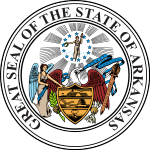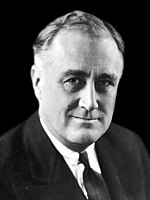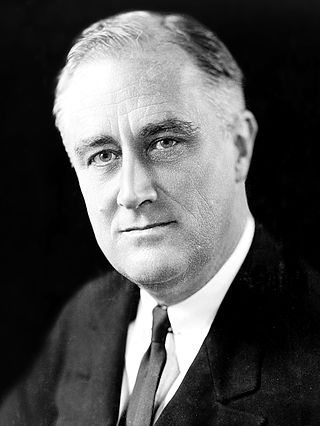
The 1932 United States presidential election was the 37th quadrennial presidential election, held on Tuesday, November 8, 1932. The election took place against the backdrop of the Great Depression. The incumbent Republican President Herbert Hoover was defeated in a landslide by Democrat Franklin D. Roosevelt, the governor of New York and the vice presidential nominee of the 1920 presidential election. Roosevelt was the first Democrat in 80 years to simultaneously win an outright majority of the electoral college and popular vote, a feat last accomplished by Franklin Pierce in 1852, as well as the first Democrat in 56 years to win a majority of the popular vote, which was last achieved by Samuel J. Tilden in 1876. Roosevelt was the last sitting governor to be elected president until Bill Clinton in 1992. Hoover became the first incumbent president to lose an election to another term since William Howard Taft in 1912, the last to do so until Gerald Ford lost 44 years later, and the last elected incumbent president to do so until Jimmy Carter 48 years later. The election marked the effective end of the Fourth Party System, which had been dominated by Republicans. It was the first time since 1916 that a Democrat was elected president.

Searcy County is a county located in the U.S. state of Arkansas. As of the 2020 census, the population was 7,828. The county seat is Marshall. The county was formed December 13, 1838, from a portion of Marion County and named for Richard Searcy, the first clerk and judge in the Arkansas Territory. The city of Searcy, Arkansas, some 70 miles away, shares the name despite having never been part of Searcy County. The county is an alcohol prohibition or dry county.

The Democratic Party of Arkansas is the affiliate of the Democratic Party in the state of Arkansas. The current party chair is Grant Tennille. Former U.S. president Bill Clinton was born in Arkansas, and served as state governor from 1979 to 1981 and 1983 to 1992.

The 1936 United States presidential election in New York took place on November 3, 1936. All contemporary 48 states were part of the 1936 United States presidential election. Voters chose 47 electors to the Electoral College, which selected the president and vice president. New York was won by incumbent Democratic President Franklin D. Roosevelt of New York, who was running against Republican Governor of Kansas Alf Landon. Roosevelt ran with incumbent Vice President John Nance Garner of Texas, and Landon ran with newspaper publisher Frank Knox of Illinois.

The 1932 United States presidential election in Massachusetts took place on November 8, 1932, as part of the 1932 United States presidential election, which was held throughout all contemporary 48 states. Voters chose 17 representatives, or electors to the Electoral College, who voted for president and vice president.

The 1920 United States presidential election in Arkansas took place on November 2, 1920, as part of the 1920 United States presidential election in which all 48 states participated. State voters chose nine electors to represent them in the Electoral College via a popular vote pitting Democratic nominee James M. Cox and his running mate, Assistant Secretary of the Navy Franklin Roosevelt, against Republican challenger U.S. Senator Warren G. Harding and his running mate, Governor Calvin Coolidge.

The 1936 United States presidential election in New Jersey took place on November 3, 1936. All contemporary 48 states were part of the 1936 United States presidential election. Voters chose 16 electors to the Electoral College, which selected the president and vice president.
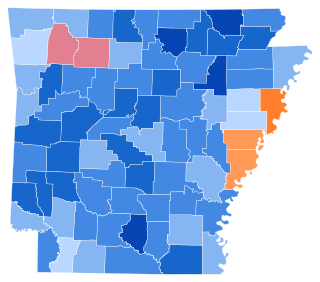
The 1948 United States presidential election in Arkansas took place on November 2, 1948, as part of the 1948 United States presidential election. State voters chose nine representatives, or electors, to the Electoral College, who voted for president and vice president. This would be the last presidential election where Arkansas had nine electoral votes: the Great Migration would see the state lose three congressional districts in the next decade-and-a-half.

The 1932 United States presidential election in Arkansas was held on November 8, 1932, as part of the concurrent 1932 United States presidential election held throughout all forty-eight contemporary states. State voters chose nine electors, or representatives to the Electoral College, who voted for President and Vice-president.

The 1936 United States presidential election in Kansas took place on November 3, 1936, as part of 1936 United States presidential election held in all forty-eight contemporary states. Kansas voters chose nine electors, or representatives to the Electoral College, who voted for President and Vice President.

The 1916 United States presidential election in Arkansas took place on November 7, 1916, as part of the 1916 United States presidential election. State voters chose nine representatives, or electors, to the Electoral College, who voted for president and vice president.

The 1928 United States presidential election in Arkansas was held on November 6, 1928, as part of the 1928 United States presidential election. State voters chose nine electors, or representatives to the United States Electoral College, who voted for President and Vice-president.
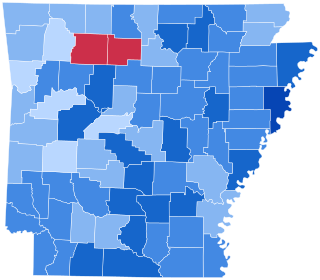
The 1924 United States presidential election in Arkansas was held on November 4, 1924, as part of the 1924 United States presidential election. State voters chose nine electors, or representatives to the Electoral College, who voted for President and Vice-president.

The 1892 United States presidential election in Arkansas took place on November 8, 1892. All contemporary 44 states were part of the 1892 United States presidential election. Arkansas voters chose eight electors to the Electoral College, which selected the president and vice president.
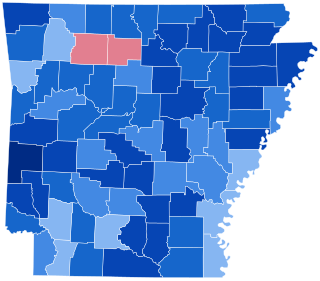
The 1896 United States presidential election in Arkansas took place on November 3, 1896. All contemporary 45 states were part of the 1896 United States presidential election. Voters chose eight electors to the Electoral College, which selected the president and vice president.
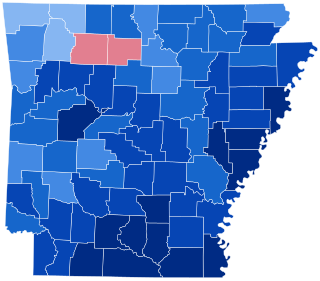
The 1940 United States presidential election in Arkansas took place on November 5, 1940, as part of the 1940 United States presidential election. State voters chose nine representatives, or electors, to the Electoral College, who voted for president and vice president.

The 1908 United States presidential election in Arkansas took place on November 3, 1908. All contemporary 46 states were part of the 1908 United States presidential election. Voters chose nine electors to the Electoral College, which selected the president and vice president.

The 1940 United States presidential election in North Carolina took place on November 5, 1940, as part of the 1940 United States presidential election. North Carolina voters chose 13 representatives, or electors, to the Electoral College, who voted for president and vice president.

The 1936 United States presidential election in Tennessee took place on November 3, 1936, as part of the 1936 United States presidential election. Tennessee voters chose 11 representatives, or electors, to the Electoral College, who voted for president and vice president.

The 1936 United States presidential election in North Carolina took place on November 3, 1936, as part of the 1936 United States presidential election. North Carolina voters chose 13 representatives, or electors, to the Electoral College, who voted for president and vice president.

